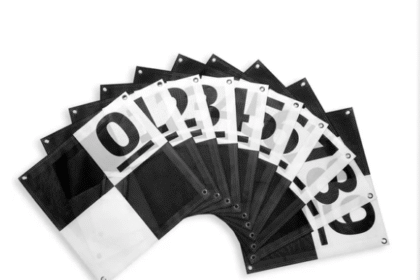Vinyl siding has long been a popular choice for homeowners seeking durability, low maintenance, and visual appeal for their home’s exterior. As material technology has advanced, vinyl siding has evolved beyond traditional designs and colors, offering a wide variety of textures, patterns, and hues that can dramatically transform the curb appeal of any residence. Whether you’re aiming for a modern look, a rustic charm, or a timeless aesthetic, the right vinyl siding can make a significant difference.
Understanding Vinyl Siding as a Design Element
Vinyl siding is not just a protective layer; it serves as one of the most visually prominent features of a home. Because of its large surface area and visibility, selecting the right style is crucial. A carefully chosen siding can elevate a home’s exterior, reflect personal style, and even influence the perceived value of the property. Its versatility means that vinyl siding is no longer limited to flat, white boards. It now includes options that mimic natural materials like wood or stone, as well as contemporary designs that offer sharp lines and bold colors.
Color Trends That Make an Impact
Choosing the right color for vinyl siding is one of the most important design decisions. In recent years, darker and bolder colors have gained popularity, moving away from the standard whites and pastels. Rich navy blues, deep charcoal grays, and forest greens are now popular choices that convey a modern and sophisticated look. For those seeking a warmer palette, earthy tones such as clay, khaki, or burnt orange can provide a cozy and inviting feel. Homeowners looking for something more traditional may still opt for creams or light grays, but with a twist—such as pairing them with high-contrast trim or shutters. The finish of the color also plays a role, with matte options offering a subtle and elegant appearance compared to the shinier alternatives.
Textures That Add Dimension
One of the standout developments in vinyl siding is the availability of textures that replicate other materials. Wood grain textures, for instance, can mimic the look of cedar shakes or natural timber without the upkeep. These textures bring depth and interest to the exterior and are ideal for homes that want a rustic or cottage-style appearance. Smooth, flat panels are more appropriate for a sleek and modern aesthetic. Meanwhile, insulated vinyl siding, which includes a foam backing, improves energy efficiency and adds a slightly more robust and solid appearance to the walls. Board and batten vinyl siding ideas is another excellent texture option that adds vertical lines and works well in farmhouse or contemporary designs, offering a blend of old-world charm and modern elegance.
Mix and Match for a Custom Look
One of the most innovative ways to use vinyl siding today is by mixing different styles, textures, or colors to create a custom, high-end appearance. Instead of covering the entire home in a single type of siding, homeowners are choosing to combine horizontal lap siding with vertical panels or shake siding for contrast. For example, the lower portion of a home may feature traditional horizontal siding, while gables or upper stories showcase cedar-look shakes. This layering technique creates visual interest and highlights architectural features such as dormers or bay windows. Additionally, using contrasting trim around windows, doors, and rooflines can frame the structure in a way that draws the eye and adds elegance.
Accentuating Architecture Through Siding Design
Every home has its unique architectural elements, and vinyl siding can be used to accentuate these details. Colonial-style homes, for example, benefit from the clean lines of symmetrical horizontal siding, while Craftsman-style houses may look best with shakes and board-and-batten combinations. Cape Cod homes often embrace soft, muted colors and shingle siding, creating a quaint and charming atmosphere. On the other hand, modern and minimalist homes frequently use smooth, wide panels in dark or monochromatic colors, creating a sleek, linear design. Siding can also be used to break up large exterior surfaces, helping to avoid a monotonous or flat look. By using different siding types on various sections of the facade, such as above and below windows or between stories, you can create balance and proportion in the exterior design.
Enhancing Entryways and Outdoor Features
Vinyl siding can also play a supporting role in highlighting other exterior features of the home. Entryways can be framed with vertical siding or contrasting colors to draw attention to the front door. Porches and columns can be accented with complementary siding textures to blend seamlessly with the rest of the house while still standing out as design elements. Garage doors, outdoor lighting, and even landscaping can all benefit from a well-coordinated siding choice that harmonizes with the broader exterior palette.
Low Maintenance with High Visual Appeal
One of the key reasons homeowners continue to choose vinyl siding is its low maintenance. Unlike wood, it does not need to be painted regularly, and it resists pests and rot. However, just because it’s low maintenance doesn’t mean it has to look basic. With the latest advancements, vinyl siding can now mimic high-end materials while still offering long-lasting durability. It is resistant to fading, cracking, and warping, even in extreme weather conditions. Modern vinyl siding products are also easier to clean, often requiring nothing more than a hose and mild detergent to maintain their appearance.
Sustainable and Energy-Efficient Options
As sustainability becomes a higher priority for many homeowners, vinyl siding has evolved to include environmentally friendly options. Some brands now offer recycled materials in their products, reducing the environmental impact. Insulated vinyl siding improves energy efficiency by adding an extra layer of thermal protection to the home, helping to maintain indoor temperatures and potentially lowering utility bills. With energy codes becoming stricter, this added insulation can also contribute to meeting new construction standards or improving existing buildings.
Planning Your Siding Renovation
Before choosing a vinyl siding style, it is important to assess the home’s architecture, the neighborhood aesthetic, and personal style preferences. Taking time to view samples in natural light, testing out color combinations, and using visualizer tools can help ensure the best decision is made. Consulting with a contractor or siding specialist can also provide valuable insight into what will work best for your home’s structure and climate. It’s also a good opportunity to inspect the underlying structure of your home and repair any damage before installing new siding, ensuring the longevity and effectiveness of the material.
Final Thoughts on Elevating Your Exterior with Vinyl Siding
Vinyl siding offers a world of possibilities for homeowners looking to enhance their home’s exterior. From bold colors and realistic textures to customized combinations and architectural accents, there are endless ways to use this versatile material. As design trends evolve and technology continues to improve, vinyl siding remains a leading option for those who want beauty, performance, and minimal upkeep. Whether updating a small cottage or renovating a grand estate, the right vinyl siding can completely transform the character and curb appeal of your home, making it a wise investment for both aesthetic and practical reasons.


